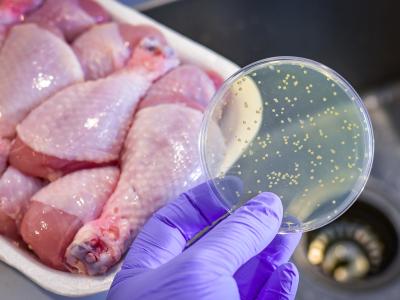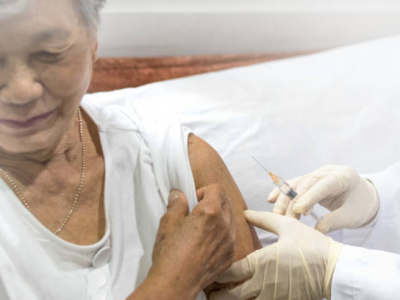Mar 7, 2007 (CIDRAP News) – Federal officials recently proposed a timetable to begin implementing a new meat and poultry inspection system designed to reduce foodborne illnesses by focusing more attention on high-risk facilities and those with poor safety records.
The US Department of Agriculture's (USDA's) Food Safety and Inspection Service (FSIS) has been exploring "risk-based inspection" since 2000. On Feb 22, Richard Raymond, USDA undersecretary for food safety, proposed to implement the new inspection system in April at 30 locations, and possibly to expand it to 150 locations by the end of 2007, according to an FSIS press release.
The proposed system is seen as the biggest change in the USDA's food inspection program since 1996, when the Hazard Analysis and Critical Point Systems (HACCP) rule made food processors responsible for systematically assessing, preventing, and controlling food safety hazards.
Assessing each facility's food safety record and the relative risk of what is produced will allow the FSIS to better allocate its inspection resources to the processors that need them most, while continuing daily inspections at all facilities, the FSIS said in the press release. A processor's food safety performance will be based on information federal inspectors regularly collect at the plants, such as health infractions and microbiologic test results.
"To continue to prevent foodborne illness, we have to improve our prevention capabilities, not just respond quickly after an outbreak occurs," Raymond said in the press release. "What will change is we will no longer be treating every plant like every other plant in terms of its adverse public health potential."
In a separate statement, Raymond asserted that risk-based inspection "will not reduce the number of inspectors nor will it save any money."
He said the FSIS is rolling out the new inspection program gradually so that it can be evaluated and revised as needed before it is expanded nationwide.
Industry and consumer groups have expressed concerns about the new approach. The American Meat Institute (AMI) in a Feb 22 statement said it supports the concept of risk-based inspections, but maintained that the USDA is launching the plan prematurely.
J. Patrick Boyle, AMI's president and chief executive officer, said the USDA should slow the process down, seek additional input, and make participation voluntary. "This rush to launch a potentially worthwhile prototype may become a needless public relations and political distraction," he said.
According to documents posted on the FSIS Web site, the agency held a 2-day stakeholder meeting in October 2006 to solicit input on the proposed risk-based inspection policy.
The Consumer Federation of America (CFA) sharply criticized the USDA plan in a Feb 22 statement. Although risk-based system for meat inspection is a worthy goal, the USDA has neither "meaningful scientific data" to rank product risk nor an unbiased system for determining facility risk, the group said. The CFA accused the Bush administration of laying the groundwork for cutting meat inspection costs and thereby increasing Americans' risk of illness and death from foodborne pathogens.
Foodborne disease expert Craig Hedberg, PhD, noted that some groups, including the Government Accountability Office (GAO), have advocated a single federal agency to oversee food safety. He told CIDRAP News that the USDA's move toward a more periodic, risk-based inspection system that puts the food safety burden on producers is similar to the model used by the Food and Drug Administration (FDA), which oversees produce.
"This is probably a necessary condition to change the culture of the USDA toward that of the FDA," said Hedberg, an associate professor of environmental and occupational health at the University of Minnesota in Minneapolis. "This is one more attempt to make that happen."
Ideally, meat inspectors at processing plants determine if products are handled properly and then intervene if they need to, Hedberg said. "But it doesn't actually work out that way," because, while the physical presence of an inspector should give a certain measure of assurance, foodborne pathogens can't be seen, touched, or smelled, he said. "You have to have different strategies to deal with that."
"Industries need more authority to police their own, and I think that's a good thing," Hedberg said.
See also:
Feb 22 FSIS press release
http://www.fsis.usda.gov/News_&_Events/NR_022207_01/index.asp
FSIS statement on the background of risk-based inspection
http://www.fsis.usda.gov/PDF/Evolution_of_RBI_022007.pdf




















